How are flexible electronic devices solving healthcare challenges?
Advances in healthcare are not only made by healthcare professionals. Led by Dr Radu Sporea, a team of electronics engineers and surgeons at the University of Surrey in the UK and Gachon University in South Korea is developing a wearable electronic device to monitor a patient’s blood flow as they recover from an operation.
Talk like an electronics engineer
Amplification — when the value of a signal is increased
Flexible electronics — electronic circuits built on flexible substrates
Light-emitting diode (LED) — a semiconductor component that emits light when a current flows through it
Optical — relating to light
Photosensor — an electronic component that detects light
Semiconductor — a material that can be tuned to have properties of a conductor or an insulator
Transistor — a semiconductor component used as a switch or amplifier in electronic circuits
When someone is recovering from surgery, doctors and nurses must keep a close eye on them to check whether the operation has been successful and to ensure they are healing well. One method currently used to do this is to periodically monitor the patient’s blood flow, as this can alert healthcare professionals to any potential problems. However, regularly removing bandages to check on the wound can be uncomfortable for the patient and can delay the healing process, which is why researchers are looking for better alternatives.
Why is collaboration essential for solving challenges?
Solving real-world challenges such as this requires interdisciplinary teams of researchers, in which each person brings their own skills, knowledge and perspectives to address the problem. A team of electronics engineers and surgeons at the University of Surrey in the UK and Gachon University in South Korea has assembled to develop a solution to the issue of post-operation blood flow monitoring. Together, the researchers are designing a wearable electronic device that can be placed over a wound, under a bandage, to continuously monitor a patient’s blood flow as they recover from their operation.
“With this collaboration, we pool our engineering skills in flexible electronics and circuits with clinicians who understand the practical needs,” says electronics engineer Dr Radu Sporea, who is leading the project. “At the University of Surrey, we have electronics engineers who are experts at creating the amplification electronics and clinicians who are performing incredible feats of surgery. Our colleagues at Gachon University have extensive knowledge of photosensors and electronic component integration. Together, we bring complementary skills, which increases our chance of success.”
What are flexible electronics?
If you have ever looked inside your phone or laptop, you may have seen the circuit board (or ‘motherboard’) which controls the system – it was probably a rectangular piece of dark green, rigid plastic covered in tiny metallic components. In contrast, flexible electronics refer to circuits that are built on flexible substrates. This allows them to change shape, making flexible electronics suitable for a huge range of applications, especially in the field of healthcare where they can be used to create wearable devices that can continuously monitor a patient’s condition.
How does the wearable blood flow monitoring device work?
There are several ways of measuring blood flow, most of which rely on changes in pressure or blood volume in a patient’s blood vessels. Radu’s team chose to use an optical method, in which light-emitting diodes (LEDs) shine light of a particular colour through the patient’s skin and photosensors detect what proportion of that light is transmitted. As the heart beats, blood is pumped rhythmically through the blood vessels and so the intensity of transmitted light changes. The sensors convert the optical signals into electrical signals, which are sent to a smartphone to be analysed.
All these electronic parts – the LEDs, sensors, and conversion and amplification components – are built on a flexible substrate to form a wearable electronic device with a thickness of less than a tenth of the width of a human hair! This ultra-thin blood monitoring device can be placed over the patient’s wound under the bandage, where it will continuously monitor their blood flow as the wound heals and send this information to the doctor. “The innovation in our device is in the way we integrate the optical-electrical conversion elements with signal amplification components in a low-cost, reliable and comfortable sensor,” explains Radu.
What challenges did the team face?
“Energy consumption and cost of manufacture are always at the top of the list for any wearable electronic system,” says Radu. If a device is not cost-effective, it will not be viable to create and use. Developing flexible electronics that are tiny but robust and reliable is not easy. “When designing electronics, you are stacking materials on top of each other,” explains Radu. “By the time you make transistors, photosensors and other components next to or on top of each other, the biggest concern is to protect the layers already made from any processing that might follow.” Radu’s team have often had to choose materials that work well together, but at the expense of maximum performance. This has led to a balancing act as the team develops components that meet all required specifications.
Reference
https://doi.org/10.33424/FUTURUM512
As the blood flow monitoring device connects to a smartphone, it is limited by the processing power of an average phone, and so it is important that the signals are transmitted as clearly as possible. “For many years, we’ve been developing electronic structures called source-gated transistors, which are very good at amplifying signals while using extremely low energy,” says Radu. “The main challenge is to integrate these transistors with the photosensors and LEDs to create sensing pads that have consistent performance and are comfortable for patients to use.”
The challenges of creating flexible electronics mean they are still in their infancy, but, with further investment and development, they have the potential to bring huge benefits for patients and healthcare professionals. The team’s wearable device for post-operation blood flow monitoring is just one example of how flexible electronics will revolutionise healthcare. As Radu says, “Our project is a small step towards making flexible electronics a reality!”
 Dr Radu Sporea
Dr Radu Sporea
School of Computer Science and Electronic Engineering, University of Surrey, UK
Field of research: Electronics engineering
Research project: Developing a wearable electronic device for monitoring blood flow
Funders: UK Engineering and Physical Sciences Research Council (EPSRC), Medical Research Council (MRC), Royal Society, Royal Academy of Engineering
Pathway from school to electronics engineering
At school, study maths, physics and computer science. “Any STEM subjects that you study with interest will be very valuable,” says Radu. “Coding will allow you to implement your ideas in electronic systems, and an understanding of biology will be useful for developing systems that interface with living things.”
At university, study an undergraduate degree in electronics engineering or a related field such as electrical engineering, maths, physics, chemistry, materials science or computer science. “Electronics engineering is probably the most versatile degree you could choose, because of the perspective it offers and because it trains you to solve problems in a way that makes you a resilient and resourceful member of any team,” says Radu. “However, many people who develop electronics are actually developing new materials and new ways of manipulating matter, so you can approach electronics from many backgrounds.”
If you want to work in research, you will then need to complete a master’s degree and a PhD.
If you do not want to attend university, you can train as an electronics engineer through an apprenticeship scheme.
Explore careers in electronics engineering
So much in our modern society relies on electronic devices, so electronics engineers are always in high demand.
As flexible electronics is a relatively new field, it is full of many exciting possibilities. “There is huge opportunity to transfer some of the lower complexity signal processing, sensing and user interaction functions from conventional electronics to flexible electronics,” says Radu.
TryEngineering (tryengineering.org), an education initiative run by the Institute of Electrical and Electronics Engineers (www.ieee.org/education), has a huge range of engineering resources for students.
Learn more about the skills and qualifications you need to become an electronics engineer, what your role will involve and what salary you can expect: https://www.prospects.ac.uk/job-profiles/electronics-engineer
Meet the team

Spencer Skinner
PhD student, University of Surrey, UK
What inspired you to become an electronics engineer?
I took an interest in electronics engineering from quite a young age, thanks to my interests in computer gaming. When I was thirteen, I decided to build my own computer. My love of engineering took off from there!
What is your role in the project?
I am focused on integrating the electronic sensors into a usable and functional device. This means I have to consider all aspects of the project and then design the electronics required to drive these sensors and take readings from them. A lot of my time is spent designing and testing printed circuit boards, so it’s a very hands-on role in the project.
What do you most enjoy about your work?
It’s incredibly rewarding to see something that I have worked on being used in the real world. Developments in medical technologies have a massive impact on a wide range of people, whether they are directly saving lives, preventing issues or understanding daily health habits. In addition to that, I get to work with people all around the world and travel to their labs, which gives me opportunities to see countries I wouldn’t otherwise travel to.
What is your advice for aspiring engineers?
Don’t be put off by the idea that you have to go straight to university to get into engineering. There are loads of other ways to enter the industry which suit different learning and working styles. Engineering is such a broad and widely applicable field; there are so many different disciplines and points of entry.

Subin Lee
PhD student, Gachon University, South Korea
Who inspired you to become an electronics engineer?
My father studied circuits, and when I was young, he would explain how they worked. I became interested in the semiconductors that are key components of circuits and wanted to study them in depth. I was interested in researching and developing multi-functional devices that perform various circuit functions with a single semiconductor. To achieve this dream, I chose to study electronics engineering.
What is your role in the project?
I am researching photodiodes for optically detecting changes in blood flow. I select the active materials to enable the proper sensing of the optical signals and, as diodes are incapable of switching current flow, I am also researching a source-gated transistor that operates at low power to switch the current flow.
What do you most enjoy about your work?
It’s fun to consider each material used in electronic devices and to study how the junctions between each material affect the device. Since materials have different optical and electrical properties, the process of checking the conditions for each combination and figuring out which combination can secure the desired properties provides a sense of accomplishment.

Dr Eva Bestelink
Postdoctoral researcher, University of Surrey, UK
How did you become an electronics engineer?
When I was young, becoming a scientist was the last thing on my mind! Science was ruined for me at school because I was made to believe that I wasn’t smart and that I couldn’t do maths. I went to university to study marketing and psychology because they sounded fun, but after graduating, I faced tough competition for the handful of available jobs. With limited opportunities, I decided to start my own business. It was a struggle and when it eventually failed, due to the recession, I decided I would aim for a career where I would always be in demand. I chose electronics engineering, even though I knew nothing about the field and was worried that I would find it boring. Having missed out on maths in high school, I had to complete a foundation year before I could start my electronics degree. During this time, I discovered that I was actually great at maths – maths is super fun when you know what you are doing, and as soon as I began studying electronics, I fell in love with it! I regret not studying engineering sooner.
What do you most enjoy about your work?
Before I studied electronics, I had zero idea what a transistor was, nor did I care! However, it’s really fun to make them. Transistors are tiny switching devices made up of conductor, semiconductor and insulator materials. Creating transistors is basically the physics equivalent of playing with LEGO or baking a cake!

Dr Hocheon Yoo
Associate Professor, Gachon University, South Korea
What inspired you to become an electronics engineer?
When I was young, I dreamt of advancing our collective intelligence by engaging in discussions with diverse groups of people. While studying electronics engineering at university, I set a goal of researching the development of semiconductor and electronic devices.
What is your role in the project?
I am contributing to an optical sensor to monitor blood flow. The sensor needs to detect changes in light absorption and reflection based on the condition of the blood, which requires the development of a flexible and reliably functioning optical sensor.
What do you most enjoy about your work?
I find it exciting to discover new physical phenomena and explore their applications. I take great joy in uncovering unexpected behaviours in new electronic devices and delving into their investigation. Moreover, developing unprecedented functionalities and pioneering new fields is a significant source of motivation and exhilaration in my research. I believe the significance of our work lies in its nature as an international collaboration – I look forward to continued successful cooperation!
Do you have a question for the team?
Write it in the comments box below and the team will get back to you. (Remember, researchers are very busy people, so you may have to wait a few days.)
Learn about Radu’s previous work printing flexible electronics:
www.futurumcareers.com/when-chips-meet-paper-the-exciting-world-of-printable-electronics



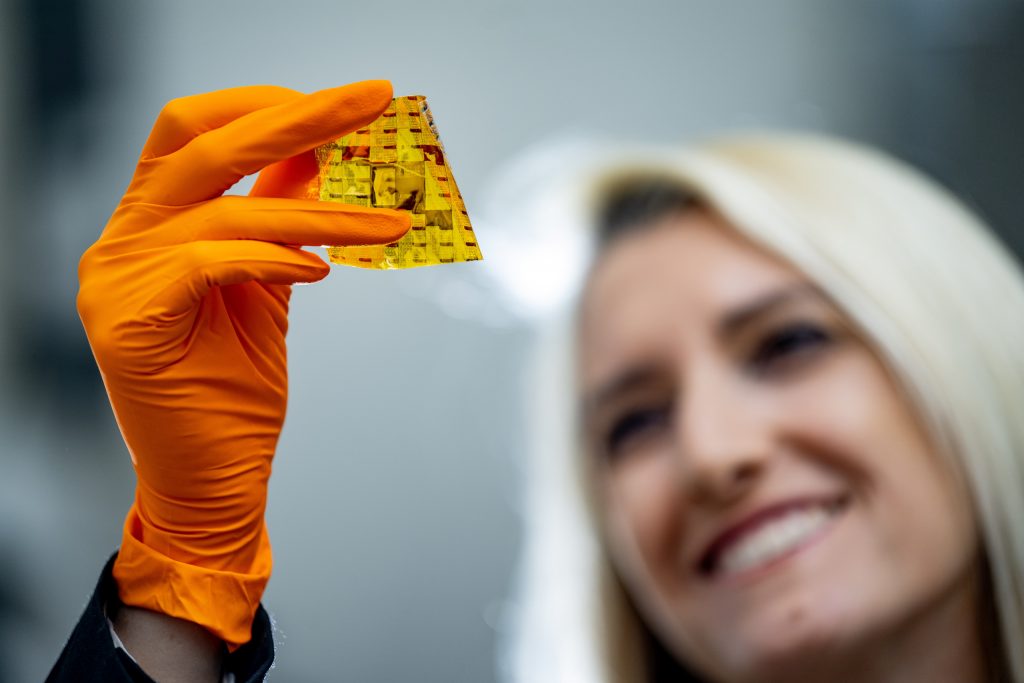
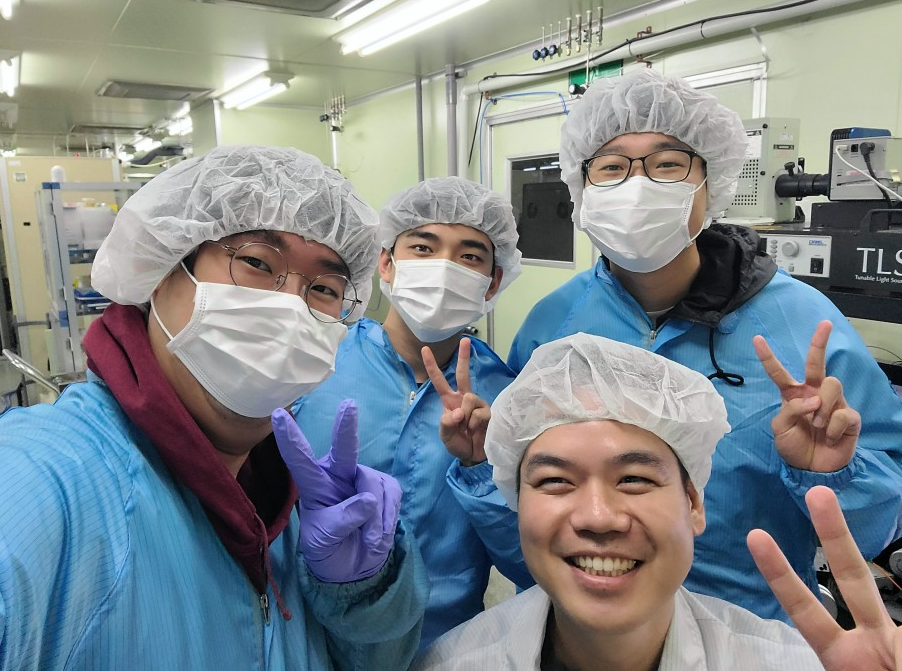
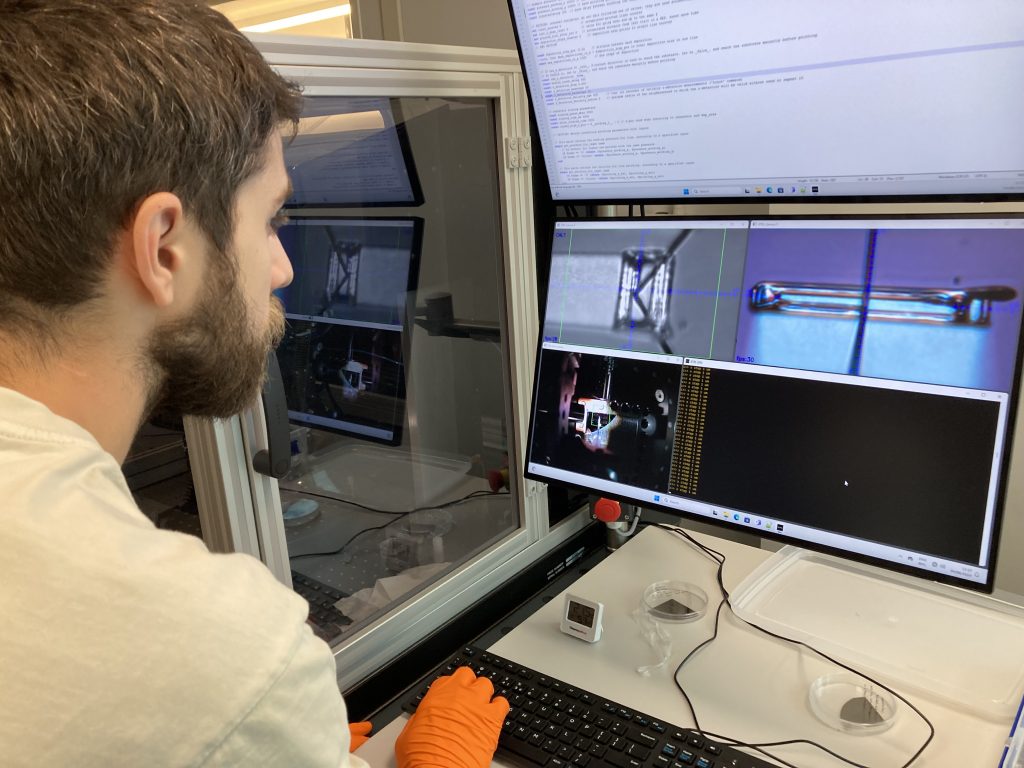
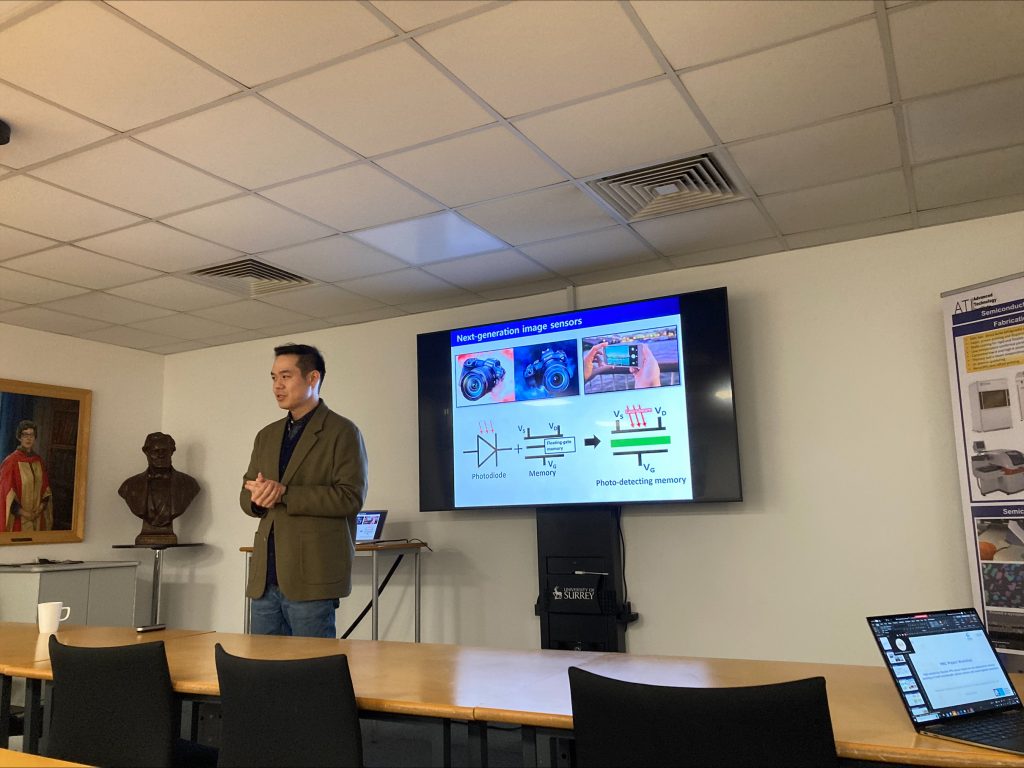
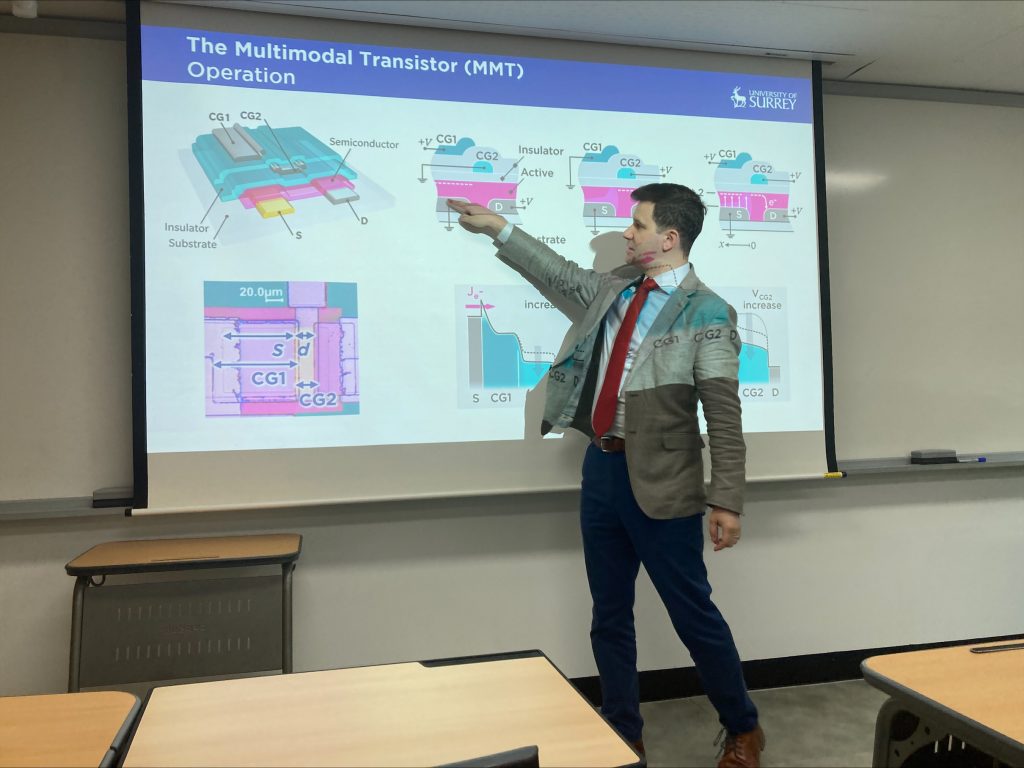


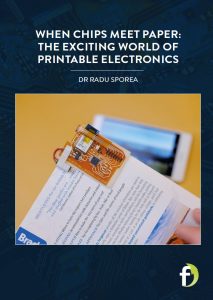
0 Comments